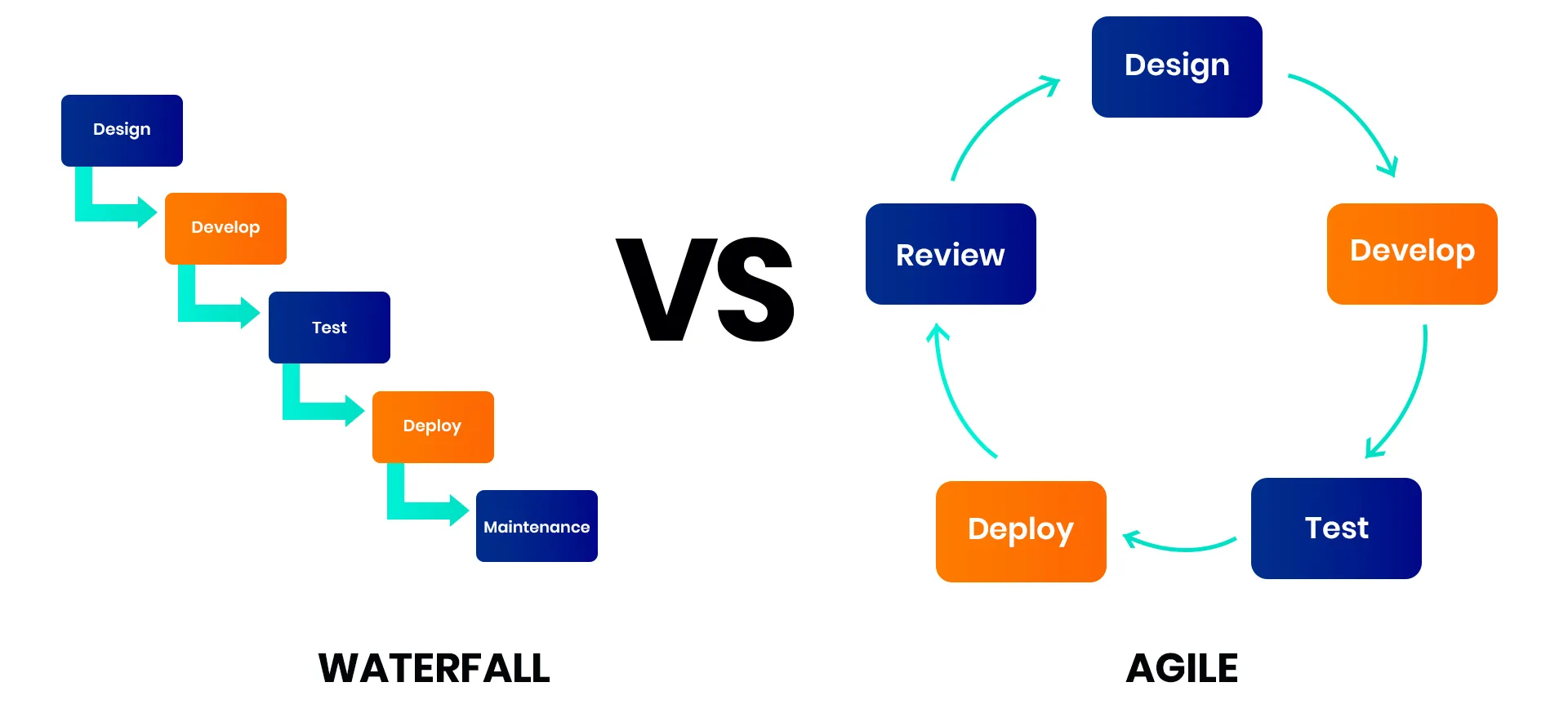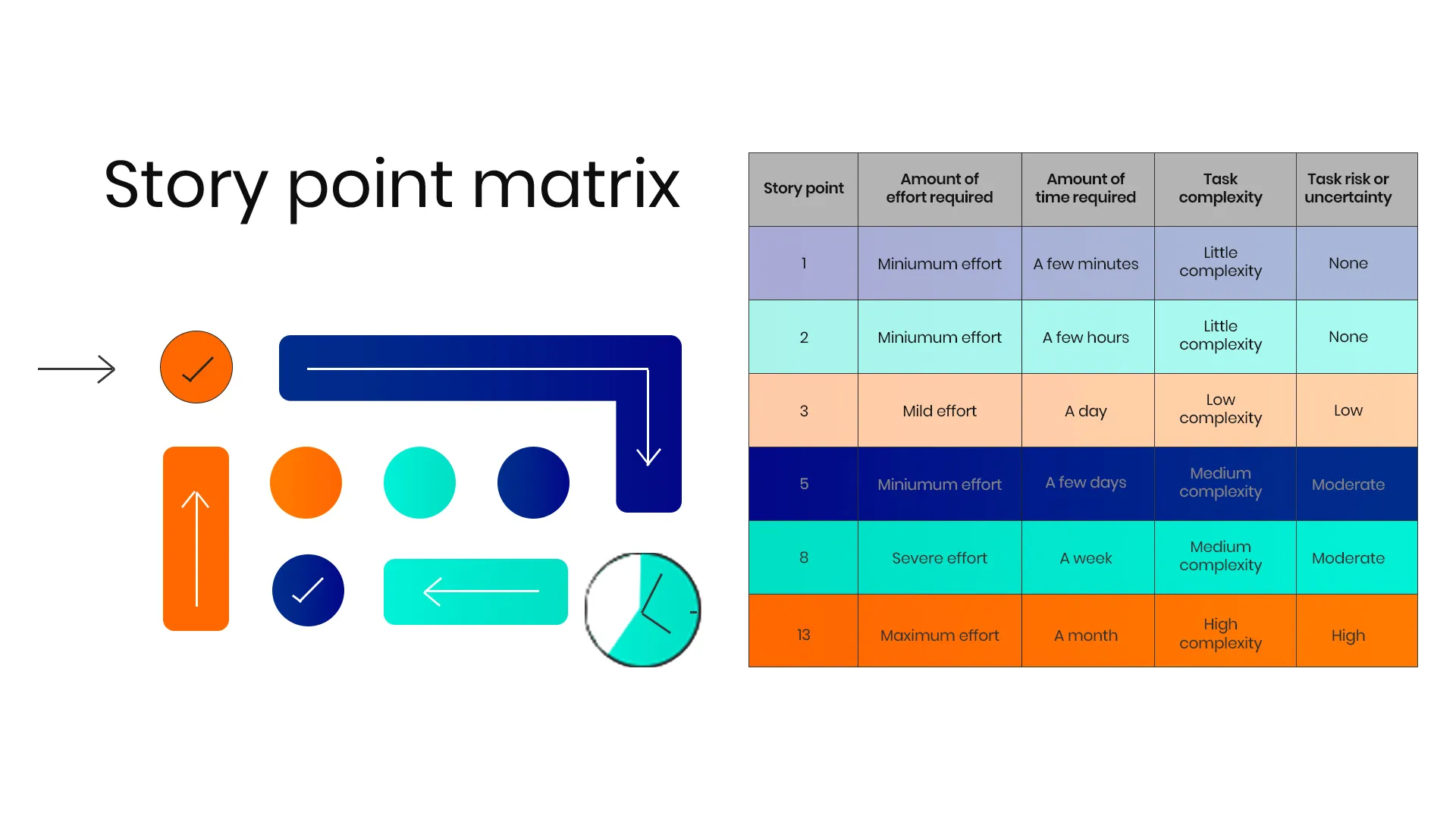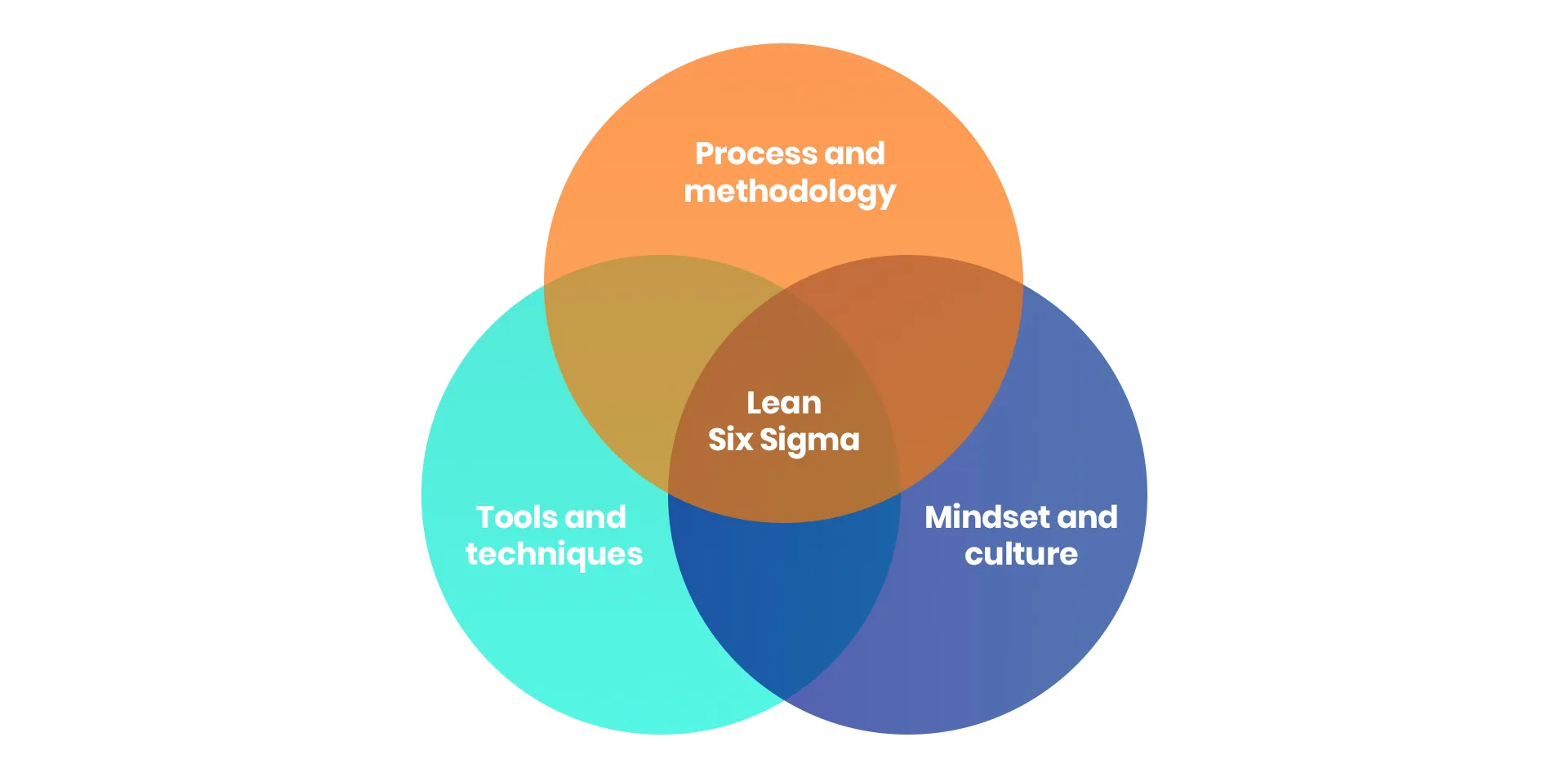What Exactly is Project Management?
Project management is a crucial aspect of our service fulfillment journey. Project management involves leveraging skills, tools, expertise, and techniques to produce value.
Exploring Various Project Management Methodologies
1. Waterfall Methodology
The Waterfall approach is a sequential and linear project management framework: Various stakeholder functions adhere to a strict chronological process.
Pros
All user requirements get captured during the project kick-off. As a result, cost and effort estimation is seamless.
Clearly defined and static milestones for a smooth and charted course of action.
Cons
Lack of flexibility: Pivoting your strategy midway through the project is impossible.
Long delivery cycles owing to meticulous planning and execution.
Deadline creeps: Delays in one phase affect subsequent development cycles.
2. Agile Methodology
We at D3V eat, breathe and live Agile.
The Agile Manifesto embraces iterative software development. Consequently, our software development lifecycle essentially decomposes into small increments, called sprints.
These sprints are typically 1-4 weeks long. In contrast to the waterfall approach, Agile development methodology incorporates much-needed flexibility in software development.

The Agile development methodology encourages continuous improvement in disparate project phases. For instance, our Cloud migration experts and data engineering team simultaneously work towards a common goal.
The Agile development methodology further offers a few interesting framework derivatives:
- Scrum
- Kanban
- Lean Six Sigma
Throwing Light on the Scrum Framework
Scrum is a fancy term for efficient collaboration. Interestingly, Scrum originates in the renowned game of RUGBY – where the coach encourages teams to accumulate experience and proactively self-organize while dealing with challenges.
7 Essential Scrum Principles to Ensure a Successful Project
Here are some commonly thrown around Scrum terms:
1. Sprint
A sprint is a defined and time-boxed period for a scrum team to make progress. The essence lies in breaking down intricate projects into smaller and achievable chunks.
A sprint backlog is a subset of the product backlog and captures tasks to accomplish in one sprint.

2. Product Owner
The product owner liaisons between the customers and the development stakeholders. The PO helps define and prioritize features. Additionally, the PO also assists in validating the sprint outcomes.
3. Scrum Master
The Scrum master essentially “coaches” various functions into adopting the agile Scrum methodology framework. This person facilitates stand-up meetings or “ceremonies” and helps promote transparency and organization within a company.
4. User Stories
A user story is a crisp and straightforward feature description documented from the user or customer’s perspective.
It’s super easy to write user stories: As a , I want for .
Here’s a user story example from D3V: As an app provider, I want to build a secure and reliable API service for my end customers to upload, process, and download audio files seamlessly.
5.User Acceptance Criteria
User Acceptance Criteria (AC) refers to conditions a user story needs to meet for validation and user acceptance.
Defining an AC also helps describe negative scenarios and clarify the development scope.
6. Story Points
This metric helps with effort estimation for completing a particular user story. Various stakeholders jointly assign a weightage or story points to tasks depending on:
- Work complexity
- Risks
- Amount of work
For instance, we at D3V would assign lower points to bug fixes than compared to cloud deployment activities.

7. Impediment (Blockers)
Impediments are obstacles or hurdles that prevent your team from completing a task. An impediment log is essentially a compilation of such barriers for further review.
Identifying these hurdles proactively during a daily stand-up call can help with quick resolution.
5 Steps of Scrum Methodology
Now that you’re familiar with the Scrum world, let’s explore an effective Scrum Routine:
1. Sprint Planning Meeting
Planning before execution saves tons of time and money. A sprint planning session helps chalk out clear deliverables with time-bound deadlines.
After finalizing a sprint goal, teams jointly work to define the User Acceptance criteria and assign user story points for easy prioritization.
2. Daily Stand-up
A real vice for many night owls: The daily stand-up isn’t as sinister as it sounds. Analogous to a half-time soccer coach talk, the daily stand-up is not much different.
The delivery team reflects on progress and upcoming sprint deliverables during the stand-up meeting.
Such team huddles also help identify and eliminate impediments right at the roots.
3. Sprint Demo/Review
The sprint demo is an exciting time for all team members. We throw light on our achievements and sprint outcomes.
The team also discusses demo feedback from customers and other stakeholders. Consequently, we update the product backlog to stay agile to our customers’ needs.
4. Sprint Retrospective
After a sprint ends, the delivery team analyzes the highlights and lowlights of the sprint session. The sprint retrospective helps inspect what went well and identify room for improvement.
Typically, these meetings go on for 3 hours for every one-month sprint cycle.
5. Backlog Grooming
Refining the product backlog is critical to ensure we efficiently direct our time and efforts. During a backlog grooming session, we:
- Remove irrelevant user stories
- Re-prioritize tasks
- Add new user stories
- Split user stories
The MoSCoW method is quite handy for categorizing user stories into:
- Must have or compulsory
- Should have or not so impactful
- Could have that bring small-scale impact
- Won’t have that don’t align with the current product vision
Accordingly, scrum teams can assign weightage and priority to each item in the backlog.
Here are some insights into how D3V fosters SCRUM:
- A product owner prioritizes a task or “user story” into a Product Backlog.
- The scrum team (Scrum Master + Data Engineers + Cloud Developers + other stakeholders) pick a task and achieve incremental value during a Sprint.
- The team then does a “Sprint Review” to inspect progress and plans for the next Sprint
- Loop and Repeat.
No, Kanban isn’t the name of a sword
Kanban is another popular AGILE framework adopted by cloud DevOps enterprises. The “Kanban Board” helps visualize a task workflow.
Consequently, it’s easy to map the flow of user stories across various stakeholders. Kanban helps streamline and improve services at each development stage.

Six Key Kanban Principles
Here are six core fundamentals of the KANBAN framework:
- Visually charts the holistic workflow for easy understanding
- Promotes leadership and ownership across all functions
- Measures and improves cross-functional collaboration
- Respects the existing current processes, roles, and responsibilities
- Simplifies process formulation within teams
Presenting the Lean Six Sigma
Next up on the podium, we have the notable Lean Six Sigma! This framework targets cultural change at the organizational level.
The emphasis is on eliminating inefficiencies while streamlining work processes. The core principle involves optimizing workflows by systematically removing waste.

Six Sigma primarily deals with reducing variation and promoting process control. The Lean aspect removes waste (i.e., non value adding processes).
Lean Six Sigma Phases
Here’s how Six Sigma works in action:
- Define
- Clearly defineThe problem from a user’s perspective. Nail the different nuances, such as the customer’s expectations and how stakeholders define this problem.
The idea here is to identify all information required to break a problem into actionable and tangible terms. - MeasureAfter the definition, it’s crucial to quantify current process capabilities. The Measure phase has two activities:
- Measure current activities and processes
- Utilize these data sets to mark a process capability baseline – which will serve as a benchmark to evaluate progress
- Analyze The next step is to analyze current performance and isolate the problem. Upon analysis, you extract meaning from data collected in step 2. Some popular analysis tools include:
- Value Stream Mapping
- Just-In-Time (JIT)
- Plan-Do-Check-Act (PDCA)
- ImproveThe Improve stage involves creating formal action plans to solve the identified root problems. Collaboration is critical as different stakeholders will provide valuable inputs, and jointly an organization can formulate a reliable and sustainable solution.
- ControlAfter deploying an improvement program, organizations must control the solution by close monitoring. This stage consists of establishing acceptable performance criteria and thinking long-term about instilling new processes and workplace habits.
Wrapping Up
Our Agile Project Management with scrum process continuously evolves to impart the best in class service to our customers.Like several software enterprises, we prefer the Agile development methodology methodology for our DevOps workflows.
Scrum, Kanban, and Lean Six Sigma offer actionable tips to enhance our project management framework. We endeavor to adopt Agile methodologies for shipping out faster and with better features.
Proactive inspections and regular team huddles help us deploy the best cloud solutions for our esteemed customers. If you’re new to cloud solutions, contact us for a free consultation.
